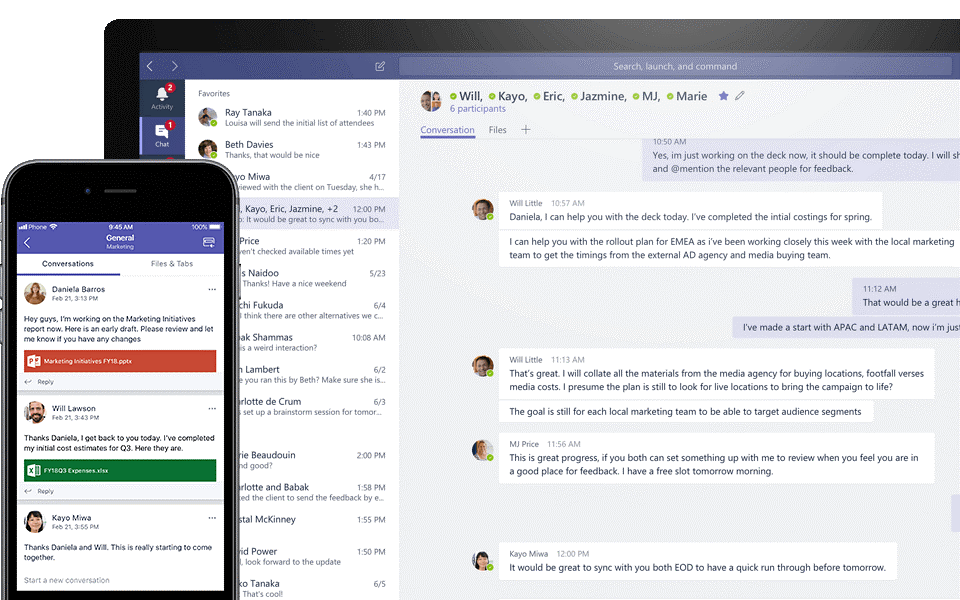Office 365 Hours: Microsoft’s Worklab Blog and Q&A

For our Office 365 Hours APAC stream in early February, we explored how the nature of work is changing and how the introduction of WorkLab by Microsoft may be playing an important role in the dialogue. Christian and his team of panelists guided us through the discussion, presented upcoming community events, and answered the most hard-hitting questions from our community.
Panelists:
- Christian Buckley, MVP+RD
- Sean McDonough, MVP
- Mike Nelson, MVP
- Hal Hostetler, MVP
- Eric Overfield, MVP
- Stacy Deere-Strole, MVP
In this episode:
The introduction of Microsoft WorkLab and how the nature of work is changing (listen live at 14:54)
In light of the pandemic, a lot has indeed been driven by the changes that people had to go through—there’s been strategy reform, priorities of features have been dramatically shifted, and even delivery schedules have been changed and sped up. There’s also been a lot of talk about burnout around online meetings and workshops recently, so exploring the dialogue on how the nature of work is changing is very much relevant.
In January, Microsoft released a new blog, WorkLab, which discusses all these new developments around the modern work environment. Presented by the higher-ups at Microsoft as contributors, it aims to propose a deeper look into a data-driven and thoughtful discussion about the new ways we do our work and what we might be doing in the future.
For some of us, remote work is an experience we are familiar with, but it doesn’t mean the pandemic hasn’t posed us with challenges and pain points that we had to overcome. Some find that they work longer due to their clients working longer hours as well. Others notice themselves having a hard time focusing because they’re surrounded by family members also trying to cope up with the situation and thus lack the peace they used to have when focusing at the office. And speaking of which, some just want to go back to the office once in a while and have that interaction with workmates like we used to.

Without question, we have all experienced adversities we needed to confront. It must, however, still be pointed out that we also had good things happening. Some might have found more opportunities. Even the innovations we’ve seen during the pandemic have been amazing and have proved that we can always rise above. And luckily for some, they have found a way to cope by interacting with others in a virtual context that has helped them move forward and flourish.
So, with all this, we realize the reality that things are changing and that we might not go back to the old normal again. It would be exciting to see what sticks, and that’s why we encourage everyone to check out Microsoft’s WorkLab and explore their content to see how they’re looking at this space. We’re sure we’ll be seeing great insights from there.
Community events (listen live at 7:35)
- Cloud Security and Compliance Series CS2 Virtual Conference: CS2 – Cloud Security and Compliance Series by Summit 7 (summit7systems.com)
- Global Excel Summit 2021 – February 6th to 9th, 2021: Microsoft Excel Conference – Welcome – Global Excel Summit
- Microsoft Ignite – March 2nd to 4th: MyIgnite – Your home for Microsoft Ignite
Q&A (listen live at 23:52)
What is the difference between Microsoft Teams and SharePoint? What is the best use case for each?
This is actually like comparing potatoes to onions—it’s different in terms of what you want to accomplish.
SharePoint is where the structured intranet activities are, where you can go through all your content and resources. It’s also a place where you can create web pages like news articles, and it allows you to navigate a website. Teams, on the other hand, is where project-based activities happen. It’s where you have conversations, meetings, videos, and all that stuff.
In most organizations, both are used at the same time. If you have Teams, you have SharePoint because that’s where all the files are going to be stored. If you have SharePoint, you might not have Teams, but it’s a good thing to have instead of having anything else, like Slack, which would only be a weird, disjointed experience for you and your team.
One user appeared twice in my chat list, but it was not a duplicate since the chat content was different. I can’t delete either and don’t know how they appeared. Any thoughts?
We have seen that scenario, and the issue came about because there was a conversation occurring on the Teams desktop app and then the person jumped on their Teams mobile app. So, two conversations were going on, the one from the desktop app which was still there, and then the new one which the Teams mobile app started. If they shut down the other one, that chat would go away.

Is there any way to allow chat to be assigned so students can only chat with staff and teachers but not among themselves?
This is one of the top things people have been requesting on User Voice, but unfortunately, the answer is no. There’s still no feature that can do this on Teams.
For anyone who doesn’t know UserVoice, it’s basically a feedback site by Microsoft where topics around user requests, issues, and discussions are posted. People vote for topics to raise it to the top for a higher chance of being noticed and responded to by Microsoft. Learn more about that here!
Can we implement the concept of target release for a custom Power App?
Yes, you can, but it depends on if you integrate Azure DevOps with your PowerApp. What you can do is create another branch from your PowerApp which you can then give to other people. It would be kind of like a whole DevOps cycle where you allow people to see the pre-release, use it, test it, and then it comes back around in the DevOps cycle. I believe it’s not built-in, but you could do the same thing to a Power App if you’re using Azure DevOps.
Is there any way to tell who created a list or library in a SharePoint site?
This is sort of sad, but the answer is no (thanks for this wonderful question, though! We were surprised by this, too.) We have never seen a UI column that says Created by. Strangely enough, this relates to Azure where you cannot find who created an object unless you look at the raw data or you look at the log date in the activity log data.
What you can do is use PowerShell, potentially PNP PowerShell, to make things a little easier. There’s an author property there that might answer your question. But we’ll look more into it, so watch out for our future episodes!

How do I create a new list using the Microsoft List App while my SharePoint Online library items are being fed into that list simultaneously so I can track document status?
If you’re tracking document status, you can use Flow. Create a list, tie it to a Flow, and then you can track the status from there. We’re putting this on homework though, so if you want to know more, stay tuned for our next Office 365 Hours episode!
I exceeded the threshold limit on the SharePoint list library. How do I fix this so I can store more IDs?
The limit is actually on the views, not on how much you store. You can store millions of records or items within a list, so I think it’s just an indexing issue. You don’t have to create another list, just go make sure it’s set to index. If that doesn’t work, try creating special views that pull back fewer items, and that might solve your problem.
I have a Microsoft 365 Business Standard Plan, and I want to use Asset Checkout in Power Apps, but I’m always being asked to upgrade my plan. Does this mean I don’t have the right level of subscription?
Yup, it usually means you have a licensing issue. It does not mean your company doesn’t have the proper license; it might not just be applied to you. You can reach out to the people in your company, they might be able to help you.
For more deep dives into Worklab and Office 365 be sure to subscribe to our blog!
Sherian Batallones is a Content Marketing Specialist at AvePoint, covering AvePoint and Microsoft solutions, including SaaS management, governance, backup, and data management. She believes organizations can scale their cloud management, collaboration, and security by finding the right digital transformation technology and partner.



